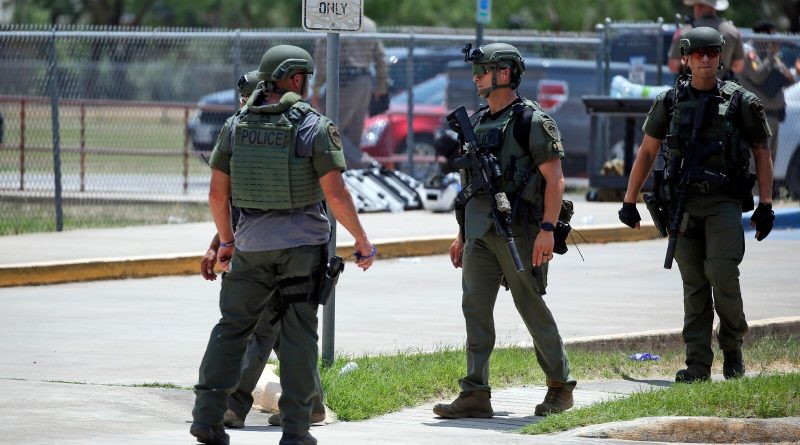Footage and emergency calls from Uvalde school shooting made public following legal battle
DALLAS — The uncle of the Uvalde, Texas, school shooter who killed 19 students and two teachers pleaded with authorities to allow him to attempt to persuade his nephew to surrender, as heard in a 911 call included in a vast collection of audio and video recordings made public by city officials on Saturday.
The documents related to the May 2022 shooting at Robb Elementary School were disclosed by Uvalde officials following an extensive legal battle. The Associated Press and other media outlets initiated legal action when the officials initially declined to release the information publicly.
“Perhaps he would heed my words, as he usually does. Everything I say to him, he listens,” the man, self-identified as Armando Ramos, stated on the 911 call. “Maybe he could surrender or take steps to turn himself in,” Ramos said, his voice trembling.
The caller informed the dispatcher that the perpetrator, identified as 18-year-old Salvador Ramos, had been with him at his residence the previous night. He recounted that his nephew had spent the night in his bedroom and had confided in him that he was upset because his grandmother was “annoying” him.
“Oh my god, please, please, refrain from doing anything foolish,” the man implored on the call. “I believe he’s harming children.”
The call came in around 1 p.m. on May 24, 2022, approximately 10 minutes after the shooting had ceased. Salvador Ramos was fatally shot by law enforcement at 12:50 p.m. He had entered the school at 11:33 a.m., according to officials.
The delayed response from law enforcement — almost 400 officers waited over 70 minutes before engaging the assailant in a classroom filled with deceased and injured children and teachers — has been widely criticized as a significant breakdown. The Uvalde tragedy marked one of the most severe school shootings in U.S. history.
Just prior to arriving at the school, Salvador Ramos wounded his grandmother at her residence. Subsequently, he commandeered a pickup from the premises and drove to the school.
A distressed woman dialed 911 at 11:29 a.m., moments before the shooting started, to report that a pickup had crashed into a ditch and that the occupant had fled onto the school grounds.
“Oh my God, they are armed,” she exclaimed, indicating that gunshots had been fired.
“Oh my God, I believe there were children in the PE area,” she said. “Please hurry!”
At 1:19 p.m., another relative of Salvador Ramos contacted 911, expressing fear that he might target her next.
“Can you please dispatch someone to my residence?” Kesley Ramos pleaded with the dispatcher. “The active gunman, he’s my cousin and I don’t want him to come to my house.”
Numerous federal and state investigations into the delayed law enforcement response highlighted various issues in training, communication, leadership, and technology, prompting questions about whether officers prioritized their own safety over that of children and educators in the South Texas town, located approximately 80 miles (130 kilometers) west of San Antonio with a population of around 15,000. Families of the victims have persistently sought answers regarding the sluggish police reaction.
Two of the law enforcement officers who responded now face charges: Former Uvalde school Police Chief Pete Arredondo and former school officer Adrian Gonzales have entered not guilty pleas to multiple charges of child abandonment and endangerment. A Texas state trooper in Uvalde who had been suspended was reinstated to his job earlier this month.
Some of the families have demanded for additional officers to face charges and have filed federal and state lawsuits against law enforcement, social media, online gaming companies, and the firearms manufacturer responsible for producing the rifle used by the assailant.
The law enforcement response involved close to 150 U.S. Border Patrol agents and 91 state police officers, in addition to school and city police. While numerous officers deliberated in the corridor, students inside the classroom dialed 911 on their mobile phones, pleading for assistance, and distressed parents outside the building implored the officers to take action. Ultimately, a tactical team entered the classroom and neutralized the shooter.
Previously released footage from school cameras depicted police officers, some equipped with rifles and bullet-resistant shields, standing in the hallway.
A study commissioned by the city, however, justified the actions of local law enforcement, commending officers for demonstrating “incredible fortitude” and “calm decision-making” in the face of gunfire from the assailant and refraining from firing into a dimly lit classroom.

